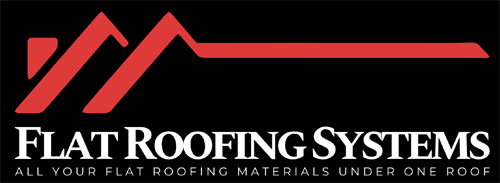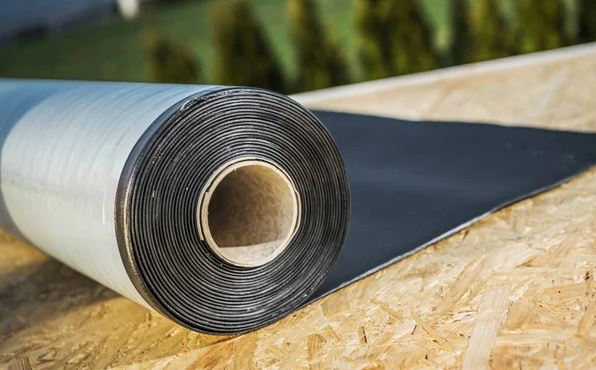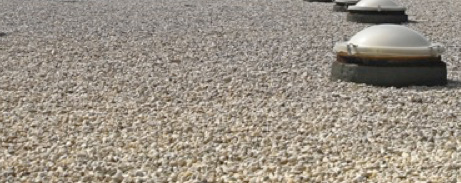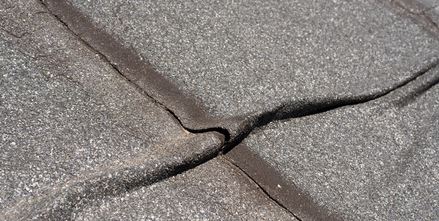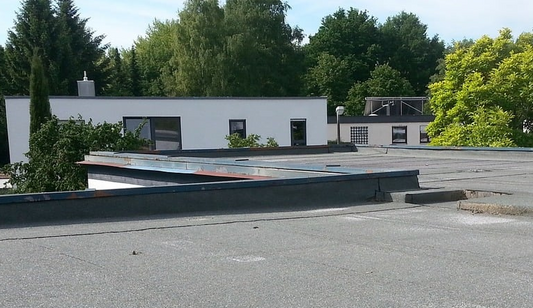Choosing between EPDM and single ply PVC roofing revolves around your specific requirements, including budget, climate, and maintenance preferences.
EPDM is more cost-effective and environmentally friendly, ideal if you're looking for sustainability and lower initial investment. It's exceptionally durable against extreme temperatures and UV rays, which helps in reducing heating costs.
On the other hand, PVC boasts superior resistance to fire and chemicals, better suiting environments with high safety or hygiene demands. It also features a longer warranty, pointing to fewer replacement worries.
Each option presents unique advantages, and understanding these can guide you toward making a more informed decision for your project.
Key Points
- EPDM roofing is more cost-effective, suitable for budget-conscious projects.
- PVC roofing offers better durability and resistance to extreme temperature fluctuations, making it ideal for areas with harsh weather conditions.
- EPDM is environmentally friendlier, being made from recycled materials and fully recyclable, aligning with sustainable building practices.
- PVC requires heat welding for installation, potentially increasing labor costs compared to EPDM's more straightforward installation methods.
- Consider the building's location and climate; EPDM performs well in diverse climates, while PVC is preferable in environments with significant temperature variations.
Overview of EPDM Roofing
EPDM roofing, known for its durability and longevity, typically exceeds a 25-year lifespan. This is because it's highly resistant to extreme temperatures, ultraviolet rays, and water.
Its design features include a seamless surface, which dramatically lowers the risk of leaks, adding to its robust profile. You'll find EPDM in a variety of colors, catering to different aesthetic preferences and functional requirements.
These roofs aren't just tough; they're also lightweight, which simplifies the installation process and reduces strain on your building's structure. However, you should be aware that while EPDM is more cost-effective in the long run due to its durability and low maintenance needs, it does come with a higher initial installation cost compared to some other single-ply roofing materials.
To verify that your EPDM roof lives up to its potential, regular inspections are vital. These check-ups help catch and remedy any early signs of damage, securing the longevity and effectiveness of the roof.
Given its versatility across various climates, EPDM is a smart choice for a wide range of projects, guaranteeing you get a dependable roof tailored to withstand diverse weather conditions.
Benefits of EPDM Membranes
EPDM membranes not only offer superior durability but also comes with an array of benefits tailored to enhance your building's protection and your own peace of mind.
- Longevity: EPDM roofs are known for their impressive lifespan. Typically, they last up to 50 years with proper maintenance, making them a fantastic long-term investment.
- Weather Resistance: Whether it's blistering sun, biting cold, or torrential rain, EPDM can withstand extreme weather conditions. This resilience helps prevent frequent repairs and prolongs the roof's life.
- Eco-Friendly: EPDM is an environmentally friendly option. It's made from recycled materials and is fully recyclable at the end of its life cycle, reducing waste and the demand for new raw materials.
This roofing material isn't just tough; it's also cost-effective.
Installation and maintenance costs are generally lower compared to other roofing types.This is because EPDM roof covering is lightweight, making it easy to handle and less costly to install.
It's black colour is great at absorbing heat during colder months, potentially lowering heating costs.
Challenges With EPDM Roofs
While EPDM roofing materials bring numerous benefits, they also come with their own set of challenges.
As you explore these materials, it's key to ponder how EPDM can become fragile and prone to shrinkage over time. This aging process might lead to cracks and tears, which can compromise the integrity of your roof.
You'll find that these membranes may require more than just occasional cleaning; periodic repainting is necessary to maintain both their appearance and performance, inevitably adding to their overall maintenance cost.
Furthermore, EPDM roofs can be susceptible to lamination. This issue often results in surface instability that could jeopardize the roof's vital waterproofing capabilities.
If you're dealing with a high-traffic area or an environment with significant chemical exposure, EPDM mightn't be the best choice. Its rubber composition is particularly vulnerable to certain chemicals, which can severely damage the material.
Lastly, if damage occurs, you'll discover that EPDM roofs are more challenging to repair compared to other single-ply materials like PVC. The rubber composition of EPDM makes it less straightforward to fix, often requiring specialized skills and tools.
Overview of Single Ply PVC
Single ply PVC roof membrane offers a robust solution for modern building needs, combining durability and eco-friendliness.
This type of roofing material stands out due to its ability to address various environmental and practical concerns effectively.
You'll find it particularly beneficial if you're looking for a roofing option that contributes to energy savings and sustainability.
Some key features to weigh up:
- Cool Roof Ratings: Single ply PVC is recognized for its Energy Star and Cool Roof certifications, ensuring a highly reflective surface that diminishes heat absorption.
This feature is vital for reducing cooling costs and mitigating urban heat island effects.
- Resistance and Durability: It's not only resistant to UV light and rot but also boasts high aging resistance and is fire-resistant, being self-extinguishing in case of fire.
- Installation and Flexibility: The installation process is straightforward, even in cooler temperatures, and the material's flexibility allows for various applications.
It comes in different thicknesses such as 50 mil, 60 mil, and 80 mil, catering to diverse needs.
Whether you're dealing with high-traffic areas or environments with significant chemical exposure, single ply PVC roofing could be the ideal choice for your project.
Advantages of PVC Roofing
Building on the overview of single ply PVC roofing, it's important to recognize the specific advantages this material offers for your construction projects.
One of the standout features of PVC roofing is its resistance to UV light and its rot-proof nature. This guarantees that your roof remains durable and long-lasting, substantially reducing the frequency and cost of maintenance.
Moreover, PVC roofing is known for its high resistance to aging and exceptional fire safety characteristics. It's fire-resistant and self-extinguishing, which enhances the safety of your building. This makes it an exceptionally safe choice, particularly in areas prone to fire hazards.
Additionally, the permeability to vapor of PVC roofing helps prevent the formation of blisters or bubbles, which are common issues that can lead to roof failure. This feature maintains the integrity of your roof for a longer period.
PVC isn't only durable and flexible but also boasts low maintenance requirements, further reducing long-term costs.
Its installation process is straightforward, with low-temperature pliability, making it suitable for a wide range of climates and applications, certifying that you can implement it in various project settings without hassle.
Limitations of PVC Membranes
Despite their many benefits, PVC membranes come with their own set of limitations that you should consider before choosing them for your project.
The issues range from installation restrictions to long-term durability, impacting how suitable they're for your specific needs.
Some key considerations:
- Installation Constraints: You can't install PVC directly over asphalt-based materials. This limitation might restrict the use of PVC in certain renovations or on existing buildings where asphalt materials are already in place.
- Cold Climate Challenges: In colder environments, PVC may not be your best bet. It tends to become brittle and more prone to cracking as temperatures drop, which could lead to more frequent repairs or replacements.
- Environmental Impact: If you're aiming for a green building certification or just want to reduce your project's environmental footprint, consider this: PVC has a higher carbon footprint compared to EPDM .
Understanding these limitations helps guarantee that you choose a roofing material that not only meets your immediate needs but also aligns with your long-term maintenance capabilities and environmental values.
Choose wisely to avoid unforeseen complications and to promote sustainability in your projects.
Comparing EPDM and PVC Costs
When comparing the costs of EPDM and PVC roofing membranes, take into account that EPDM is generally more affordable. You'll find EPDM priced between £10 - £20 per square metre, whereas PVC typically ranges from £19 - £25 per square metre.
The installation cost also leans in favor of EPDM due to its flexibility in installation methods—whether fully adhered, mechanically fastened, or ballasted—unlike PVC, which requires heat welding for its seams.
While PVC may feature longer warranty periods, extending up to 30 years compared to EPDM's 10 to 20 years, this factor might affect your long-term budgeting.
Maintenance costs should also be a consideration. EPDM's simpler repair process results in lower maintenance expenses over time. This is something you'll appreciate, especially if you're managing a tight budget.
Decision Factors for Roof Selection
After evaluating the costs of EPDM and PVC, you'll also want to ponder several other factors to guarantee you choose the right roofing material for your specific needs.
The climate you live in, the type of building you're roofing, and how much traffic the roof will endure are critical considerations.
Climate Suitability: EPDM performs well in various climates, but if you're in an area with extreme temperature fluctuations, PVC might be the better option due to its high durability and resistance to weathering.
Warranty and Longevity: PVC often offers longer warranties up to 30 years, compared to EPDM's 20-year warranties.
This can be a substantial factor if you're looking for long-term reliability and fewer worries about replacement costs.
Environmental Impact: Consider the eco-friendliness of the material.
PVC is recyclable and generally has a lower environmental impact, whereas EPDM has a higher carbon footprint.
Additionally, think about the aesthetic aspect.
If appearance matters markedly for your project, EPDM's wider color range might sway your decision.
Ultimately, aligning these factors with your project's specific requirements will lead you to the best choice.
Rounding Up
So, when deciding between EPDM and single-ply PVC for your roofing project, weigh the pros and cons. EPDM offers durability and easy installation, while PVC boasts superior resistance to chemicals and fire. Consider your specific needs, like budget and climate, before making a choice. Remember, both options have their unique benefits and limitations, so choose the one that best aligns with your project's requirements to guarantee you're making the most informed and effective decision.
